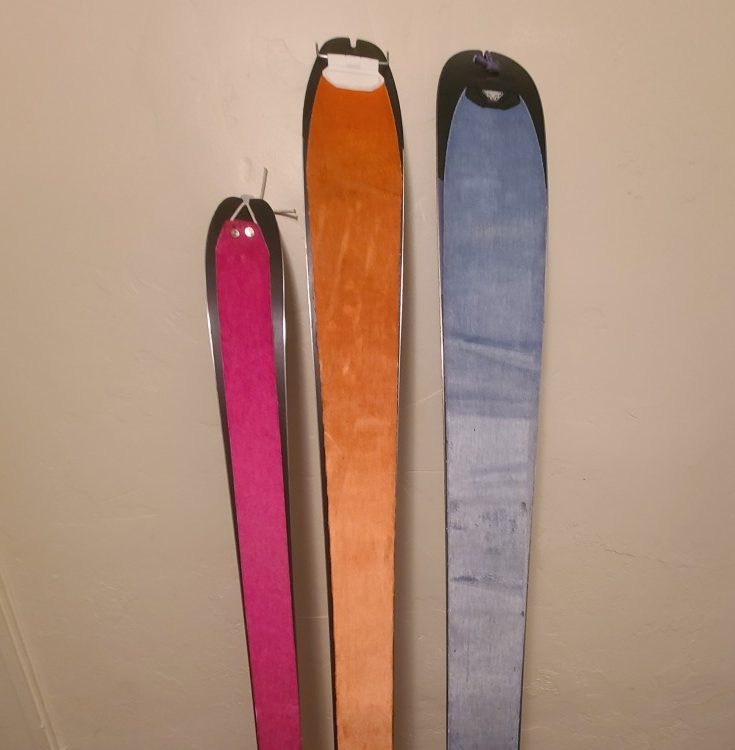
Climbing skins come in several styles: here’s a beginner’s guide– Skins 101.
All ski tourers (and Ringo Starr, of Beattle’s fame) know one indisputable truth—you’ve gotta get up to get down. As backcountry skiers (or resort skinners), the climbing skin often gets overshadowed by the newest carbon skis, mutant touring boots, and ultralight bindings, but without this one piece of gear, we’d all be side-stepping for our turns.
Long before chairlifts brought luxury to skiing, skiers used skins for ski travel through the mountains. The oldest record of skiers using climbing skins dates back to 1555 and references fawn skins attached to skis for grip. (A recent article in the NYT also discusses the deep history of skiing in China.) In the 1930s, when the 10th mountain division was training soldiers just outside of Vail, standard-issue kits included climbing skins made from seal skins. Skin technology has evolved, but still struggles to conquer the paradox of balancing optimal grip and glide.
Anatomy of a Climbing Skin
Modern climbing skins all share a few core design characteristics. Skins have a plush (or grip) side designed to glide forward and grip the snow to stop from sliding back, a glue side to help the skin stick to the base of the ski, a tip attachment, and (in most cases) a tail attachment.
The plush of modern climbing skins is made most commonly from nylon, mohair, or a mix. Synthetic, or nylon skins, use a manufactured plastic (nylon) to provide grip and glide. 100% nylon skins provide the greatest grip and durability, and some of the most popular skins on the market, including Black Diamond’s Ascension Skins utilize this tried and true formula.
Mohair skins continue the tradition of outsourcing design to nature. This material is made from Angora Goat hair, and for the purposes of a ski skin, provides exceptional glide. Mohair inserts are now even used in place of kick wax or a fish-scale pattern on many classic cross country skis precisely because of the great glide and kick. Mohair skins still grip exceptionally well, if perhaps a little less than their nylon counterparts; however, the real drawback to 100% mohair skins comes in their durability.
With nylon offering grip and durability and mohair providing unmatched glide, most climbing skin companies offer a nylon-mohair-mix. These mohair-mix skins, usually around 65-70% mohair and 30-35% nylon, have found a sweet spot in functionality and performance.
Skin On — Skin Off
Finding that perfect mix of grip and glide is important for climbing skins. However, anyone who’s ever finished a ski tour with their skins duct-taped to their ski knows it’s not the only important factor. A skin’s glue and how it attaches to the tip and tails of the ski are vital to keeping that skin working for you throughout a ski tour.
Each skin company has a slightly different glue formula. If glue is too sticky, it may be challenging to take off your ski, or pull skins apart after being folded together. If the glue is not sticky enough, you are more likely to kick a skin—having the skin fall off your ski after losing its stickiness or becoming iced up. Each company has found its own sweet spot, and you can help narrow down your choices if you have a preference one way or another.
When it comes to tip and tail attachments, there are three main designs you can choose from.
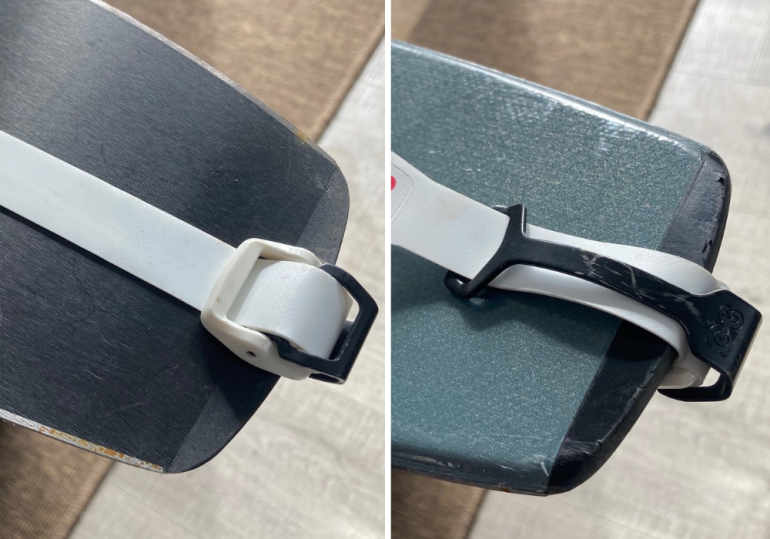
G3’s more elaborate tail clip design. On this 22′-23′ Atomic Backland 107, the stock Pomoca tail clips would not fit- the G3 skins have come into service with a solid tail clip fit.
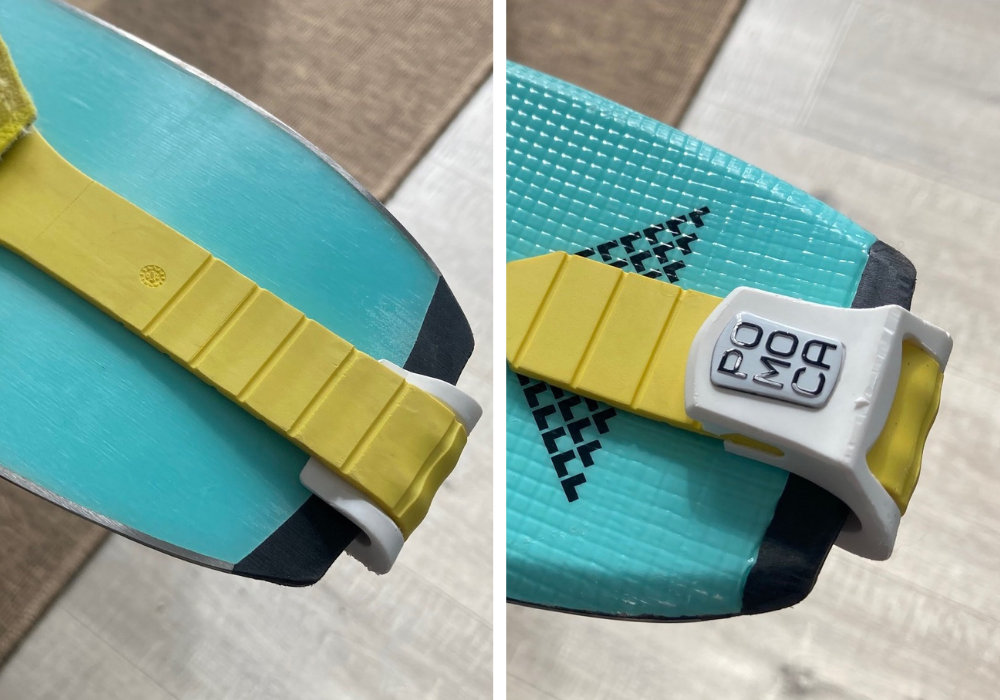
Pomoca’s basic and functional tail clip design.
Tail-rip Skins
The most common design is a metal (or plastic) bail resting on the tip of the ski and a clip attachment connecting to the ski’s tail, and adds tension to the skin. When using these types of skins, attach the skin to the tip first and pull the skin down to the tail of the ski. When removing the skins, remove the tail clip first and rip the skin tail to tip. This type of attachment system is reliable and easily adjusted to the length of your ski. For the semi-limber, It is possible to take off these types of skins without removing your skis, however, it may be more challenging for some than with tip-rip skins.

A basic tip-rip system. This set up requires a small notch in the ski’s tip.
Tip-Rip Skins
Tip rip skins are designed to be used with skis that have a notch cut into the ski’s tip and use an attachment at the tip of the skin that sets in this notch. These skins are designed to be easily removed without taking off your skis. Many tip-rip skins still use tail attachments. In this case, the skins are applied tail to tip, with the tail clip attached first and tension applied on the skin toward the tip.
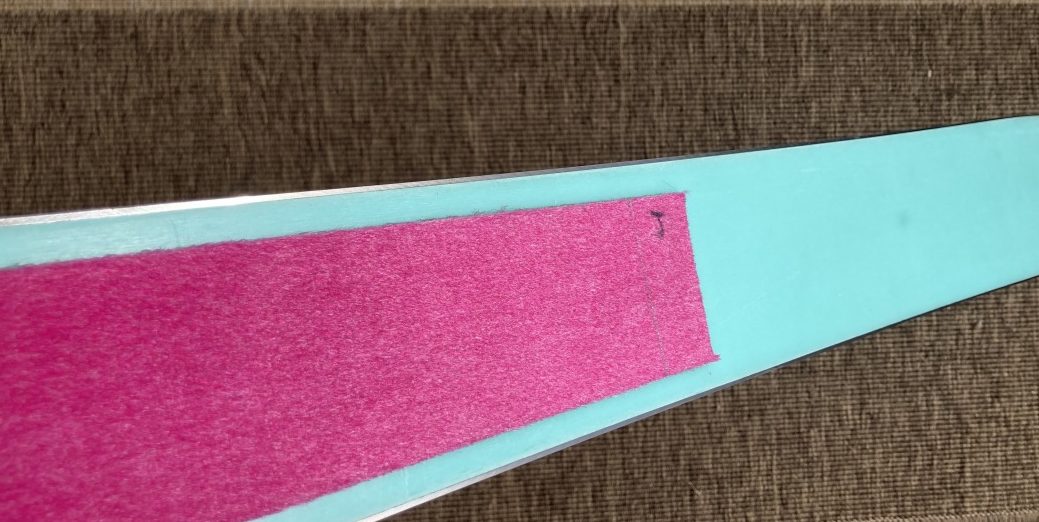
Here we see the tail end of a race ski and race skin. Race skins have no tail attachment system and rely on skin glue to keep the skin tail secure and tensioned.
Race Skins
Race style skins are a tip-rip skin with no tail attachment. These skins are most commonly used in ‘skimo’ racing on 60mm wide skis, but you can make this skin style for any ski with a tip notch. These skins are applied from the tip down, with tension applied down the ski.
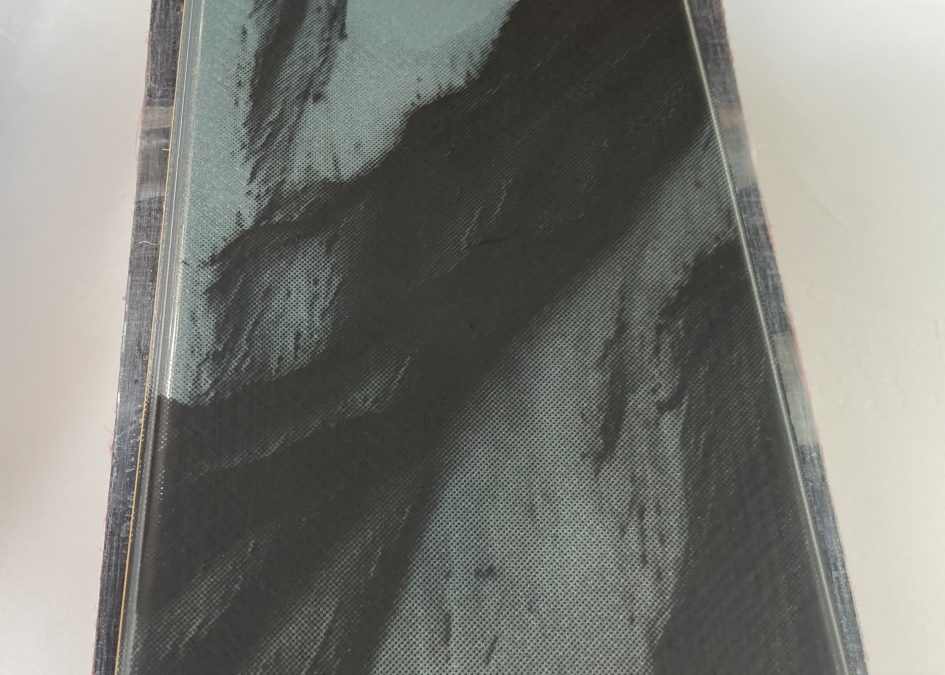
We can see the un-cut skin poke out beyond the ski’s edges. It’s a few millimeters too wide on each side.
Fitting Skins
With skis and shapes of all sizes, getting a skin custom fit for your ski is important. If your skin is too narrow, you can lose grip, especially when side-hilling in steep terrain when your ski base is not in full contact with the snow. However, if the skin is too wide and no edge is exposed, you can lose grip when you need it most. And if the skin is significantly wider than the ski, the glue will become covered in snow and can more quickly ice, causing it to stop sticking to the ski base.
A perfectly fit skin will match the width and side-cut of your ski while leaving the edge exposed. The most common way to get this custom-fit is to buy a trim-to-fit skin for the length of your ski. These skins come in various lengths, each with an adjustable tail clip, and a variety of widths. You need to select a wider width than your ski, and the skin is then cut using a specialized cutting tool down to your ski’s exact dimensions.
Pre-Cut Skins
Many brands sell pre-cut skins designed for specific models. While these skins will carry the branding of the ski in question, in most cases, they are rebranded versions of the same skins you would buy as a trim-to-fit skin.
Choices, choices, choices….
Even once you’ve narrowed down whether you’re looking for a mohair or nylon skin and a tip or tail rip skin, there are still plenty of choices. There are five leading skin manufacturers: Black Diamond, G3, Contour, Pomoca, and Contour.
Each of these brands has its own unique selling points. Black Diamond sells only nylon or mohair/nylon mix skins, while the other brands also offer 100% mohair options(and mixes) for those with a need for speed.
Nathan Boyer-Rechlin lives in Carbondale, Colorado and is the Events Coordinator for Cripple Creek Backcountry.
